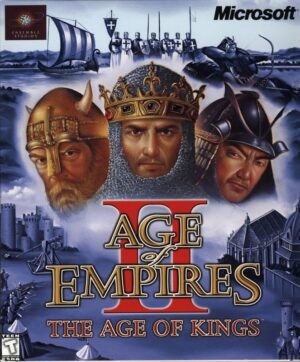Retro Replay Review
Gameplay
Critical Bullet: 7th Target continues the decision-driven tradition of its predecessor, putting you in the shoes of Sara Fitzgerald as she navigates the nefarious underbelly of Neo Tokyo. At each junction you’re presented with multiple choices—some seemingly innocuous, others brimming with peril—that can alter the course of the narrative, open new pathways, or trigger abrupt and tragic endings. This branching structure encourages careful deliberation, but also rewards curiosity, as revisiting failed timelines can unlock hidden scenes or valuable clues.
(HEY YOU!! We hope you enjoy! We try not to run ads. So basically, this is a very expensive hobby running this site. Please consider joining us for updates, forums, and more. Network w/ us to make some cash or friends while retro gaming, and you can win some free retro games for posting. Okay, carry on 👍)
A standout addition is the “rewind” mechanic, which allows you to step backwards after making a fateful decision. Rather than scrambling through old save files, you can immediately see which choice led to an unfavorable outcome and try a different approach. This feature smartly reduces frustration without removing the weight of consequence—deadly mistakes still carry emotional impact, and some wrong turns are deliberately ambiguous, prompting you to reflect on Sara’s motivations and values.
Interwoven with these choices are fully animated CG sequences that punctuate key story beats. These short movies bring high-stakes confrontations to vivid life, heightening the drama when Sara corners a Mafia lieutenant or confronts a greedy megacorp executive. Though primarily a narrative-driven experience, Critical Bullet punctuates its visual novel core with occasional action set-pieces—quick-time events, timed dialogue prompts, and environmental puzzles—that keep the pacing dynamic and ensure you never feel like a passive observer.
Graphics
Visually, Critical Bullet: 7th Target leans into a dark, futuristic noir aesthetic. Neo Tokyo’s rain-slicked alleys glow with neon signs, while shadowy skyscrapers loom overhead, creating a palpable sense of claustrophobia and unease. Background art is richly detailed, each district feeling distinct—from gang-controlled backstreets littered with graffiti to sterile corporate high-rises brimming with surveillance cameras.
The CG movie sequences are a highlight, blending hand-drawn character art with subtle animation and dynamic camera angles. Characters’ expressions shift realistically as tense negotiations spiral into violence, and the game’s color palette shifts seamlessly from cold blues during stealthy infiltrations to fiery reds in explosive firefights. Textures are crisp, and lighting effects—neon reflections on wet pavement or the strobe of police sirens—elevate immersion.
Character designs strike a balance between anime influences and gritty realism. Sara herself is rendered with sharp lines and nuanced details—from the glint of determination in her eyes to the scuffs on her leather jacket. While occasional texture pop-ins can occur in the most bustling environments, these rare hiccups don’t detract from the overall presentation, which remains consistently polished throughout the roughly eight-hour campaign.
Story
As a sequel to Bounty Hunter Sara: Holy Mountain no Teiō, 7th Target builds upon an already compelling foundation. The narrative thrust places Sara in a city teetering on the edge of collapse, where the police are powerless and crime lords hold court. You’ll encounter a cast of memorable antagonists—ruthless mafia bosses, corrupt executives, and clandestine informants—each woven into a web of conspiracies that threaten to engulf Neo Tokyo.
Storytelling hinges on your choices, forcing you to weigh personal loyalty against moral duty. Do you spare a low-level enforcer who offers valuable intel, or do you cut him down to send a warning? Will you trust a mysterious hacker promising evidence on the seventh mafia boss, or suspect a double cross? These dilemmas carry real emotional weight, as past actions echo in later chapters and influence Sara’s relationships with allies and enemies alike.
The writing deftly balances high-octane action with quieter, character-driven moments. Between gunfights and rooftop chases, you’ll share vulnerable conversations with allies, learn about Sara’s haunted past, and witness the human cost of underworld warfare. Twists abound, and multiple endings ensure that replaying the game reveals new layers of intrigue—whether you’re unmasking the true puppet master or forging uneasy alliances to save the city.
Overall Experience
Critical Bullet: 7th Target offers a gripping narrative adventure that marries choice-based gameplay with slick presentation. Fans of story-driven titles will appreciate the depth of its branching paths and the way each decision can ripple through the plot. The rewind feature in particular strikes a perfect balance between convenience and consequence, letting you explore every twist without losing the tension of irreversible mistakes.
While the game leans heavily on its visual novel structure, it sprinkles in enough action sequences, environmental puzzles, and quick-time events to keep the experience varied. The CG cutscenes and art direction reinforce the gritty, neon-soaked mood of Neo Tokyo, making every confrontation feel cinematic. Occasional technical hiccups are rare and minor, and the narrative’s pacing maintains a steady build toward an electrifying finale.
For players seeking a dark, mature story with meaningful choices and memorable characters, Critical Bullet: 7th Target delivers a compelling ride. Its replayability is high, thanks to multiple paths and endings, and the blend of narrative depth with occasional interactive set-pieces ensures the game never drags. Whether you’re a returning fan of Bounty Hunter Sara or a newcomer hungry for futuristic noir drama, this sequel stands as a strong and satisfying chapter in Sara Fitzgerald’s saga.
 Retro Replay Retro Replay gaming reviews, news, emulation, geek stuff and more!
Retro Replay Retro Replay gaming reviews, news, emulation, geek stuff and more!




Reviews
There are no reviews yet.